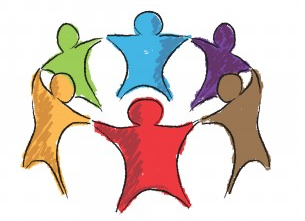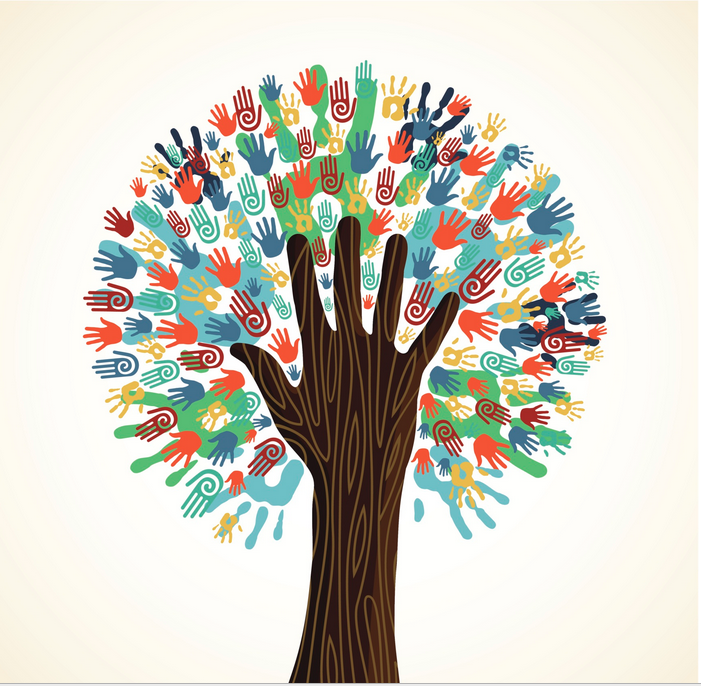January 5, 2015 - 15:55

Relationships: Actions, Presence, and Connection
In the book The Art of Being a Healing Presence, James Miller defines a healer as "someone who can see your movement toward wholeness more clearly than you're able to yourself at a given point in time". Empowerment begins, depends, and thrives on relationships. Whether the relationship is between two people or between a person and something else, empowerment depends on connection. With regards to a healer, Miller considers the idea that an empowering "healing presence" grows from the pure, raw relationship between two people, rather than actions or even words. Relationships are the foundation of empowerment, thus we spent quite a while asking ourselves how relationships facilitate empowerment. How can a teacher empower a student? Or must the student empower him or herself? How do communities empower community members? And how can we achieve self empowerment, if at all?
Advocacy
Deficit:
- Promoting the needs and wishes of people who are not able to do so themselves.
Desire:
- Creation of a space that fosters self-empowerment and encourages people to think critically and to seek fulfillment of their own needs;
- Giving voice and taking action in solidarity with/on behalf of/as an ally to the rightful claims and ambitions of others whose interests one supports and recognizes as connected with one’s own;
- Involves self-advocacy: Making visible and audible one’s own needs in the context of power disequilibrium.

http://www.ccsd.ws/imageGallery/DHayes20651/advocacy.jpg
Communication
Deficit:
- Conversation between individuals without a recognition of their personhood, dignity, or group memberships?
- The unidirectional imparting or exchanging of information or news. To be given information regardless of one’s ability to understand the information. This is a one-way form of communication, without regards to the individual receiving it. In a deficit-based model a physician may not understand the patient or the patient’s cultural context within they receive the information, thus leaving the patient without a clue, but the doctor thinking he was understood (nnlm).
Desire:
- Open and approachable (verbal and non-verbal) dialogue among individuals in which said individuals feel appreciated and respected; unstructured and subject to the agency/desires of all individuals involved.
- Means of connection between people or places, in particular: the means of sending or receiving information” (apple). This version of communication implies not only spoken communication but also one that imparts the ability of one to understand and communicate issues. This communication depends on “shared responsibility between [for example] physician and patient for health care.”
Community:
Deficit:
- A group of people living in the same place or having a particular characteristic in common. A deficit-based model of community relies not on actual interaction or interest in making it stronger, but by association. This version of community is not productive;
- Boundaries that define where one does and does not belong, manifesting in insider/ outsider relationships;
- The lack of a person’s independence;
- A defined set of people with whom you share group membership by virtue of proximity or similar behavior;
- A group of people who create an exclusive environment;
- Example of the Puentes de Salud community viewed through a deficit lens (from the New York Times): “Puentes, which has treated about 3,300 patients, caters largely to people whose lack of insurance and legal immigration status may make them ineligible for treatment under other programs. Many patients are further handicapped by poor or nonexistent English, limiting their ability to navigate a complex health system.”
Desire:
- A feeling of fellowship with others, as a result of sharing common attitudes, interest, and goals. Community is based off a group collective for a better future: “community health is not the sole domain of health care providers. Health and wellness result from a collaborative, multidisciplinary effort that focuses on addressing the conditions in which we grow learn, live, work and age” (puentes). Models like Puentes focus on helping the community with their own input. It is not a singular model set out to fix one problem, but a group that works to strengthen the community through education and other directives. Community in this sense is the way in which the culture flourishes together and grows;
- Groups that act as support; similar to a nested-doll, a community nests smaller communities within larger and larger ones—all inherently connected;
- A group of people who share a common interest, religion, geographic location, language, culture, history or background;
- The set of resources and people available to either make an impact on your perceptions, understandings, health, or quality of life in some way, or for whom you might do the same;
- A group of people who unite to provide a support system to others who share similar values and belief systems;
- Example of the Puentes de Salud community through a desire lens: Puentes de Salud is a “nonprofit organization that promotes health and wellness of South Philadelphia’s rapidly growing Latino immigrant population…Puentes works in partnership with community members”. Their organization is volunteer-run that allows for trust and respect to develop, while working collaboratively to build a stronger and more unified community. There is no top-down approach because Puentes believes in meeting the Latino community and their linguistic needs.

http://www.rsablogs.org.uk/wp-content/uploads/2013/06/Community-tree.jpg
Cultural Appropriateness
Deficit:
- A culturally appropriate education is one that modifies conventional, normative education in order to fit the needs of minority populations who are cultural outcasts to eventually make it so that they are no longer minorities/so that this framework becomes the new norm for everyone?
Desire:
- A culturally appropriate education is one that builds on the strength of a particular group of people. Using a person’s “cultural capital”? This need to modify education in order to suit the audience is applicable to all people, not just minority populations.
Culture
Deficit:
- a system of learned behavior patterns characteristic an individual’s society
Desire:
- a social framework for participating in and understanding the world
Help
Deficit:
- needing to ask for something that you cannot do
Desire:
- community building aspect, looking at the strengths of all people and using it to the benefit of everyone.
- A manifestation of people’s capacity for empathy and change
Holistic:
deficit based:
- from ‘holy’ … unreliable .. unscientific .. Alternative, not proven
desire based:
- many aspects of life intimately interconnected in a balanced and harmonious way that benefits the whole

http://s3.vidimg.popscreen.com/original/12/NjAxMTEzNjUz_o_holistic-health-education.jpg
Relationship
Deficit:
- the connections between people and how they connect to each other And potentially hinders someone’s independence/wellness?
Desire:
- The interaction and communications among people, the bond that links them together so that they can achieve things and be together
- from : “…how they foster relationships between both students and staff provide excellent environments for the growth of empowerment and the achievement of level 3—critical literacy.”
Resources
Deficit based:
- Social, physical, economic, and cultural capital that’s divided unequally among people in society
Desire based:
- The set of internal talents/awarenesses and external support that all individuals possess on some level. What composes one’s set of resources depends on the cultural and economic context.
Social Acceptance
Deficit:
- Allowing a member of another group to join your group. Agreeing with a foreign idea that might be different from your own opinions
Desire:
- Acceptance does not always have to be whole hearted agreement. Acceptance mandates that individuals at least attempt to mull over an idea, whether that individual agrees with the idea or not. Acceptance is a willingness to reconcile ideas rather than a mandate to agree with an idea without objections. Acceptance is an intrinsic human condition where all individuals should be allowed the same social and academic rights and interactions.

The above figure visually illustrates varying ways that social acceptance (or rejection) can take form. Exclusion is the opposite of acceptance where a physical or ideological barrier separates two groups of people. Segregation is when two groups of people share similar resources, but do not interact. Integration is when two groups of people are physically together, but they don’t interact. Inclusion is the situation where the idea of “groups of people” doesn’t exist, but rather all individuals share the same space and are allowed the same interactions and rights. This distinction between inclusion, integration, segregation, and exclusion in the context of “acceptance” has important ties to topics in education like disability education, ELL students, and inclusive classrooms.
Stereotype
Deficit-Based
- A generalization/judgment of an individual based on appearance and personality. oversimplified generalization about a person or thing.
- a way to judge someone because it is often a widely held generalization.
Desire-Based-
- A quick and simple generalization that may help with understanding an individual. A way in which to determine a first impression and then build upon it or alter it as one gets to know the individual person more deeply.
Surrender
Deficit-based:
- The act of giving up and giving in to a state of oppression
Desire-based:
- Recognizing one’s limitations in a mindful way such that the discontinuation of a task becomes an act of self-care and self awareness
Working Class
Deficit-based:
- A social group referred to as unskilled labor. Marked by less resources and, often, less education.
Desire-based:
- The strong backbone of the global economy. Workers who contribute to society by often doing the hard laborious work that members of the middle and upper classes cannot accomplish. Maybe “that the middle and upper class are not required to do” instead of “cannot do”. “cannot do” sounds a bit like a deficit perspective.
- Perhaps working class can refer to middle class too. Education level might have a lot to do with defining the working class.
